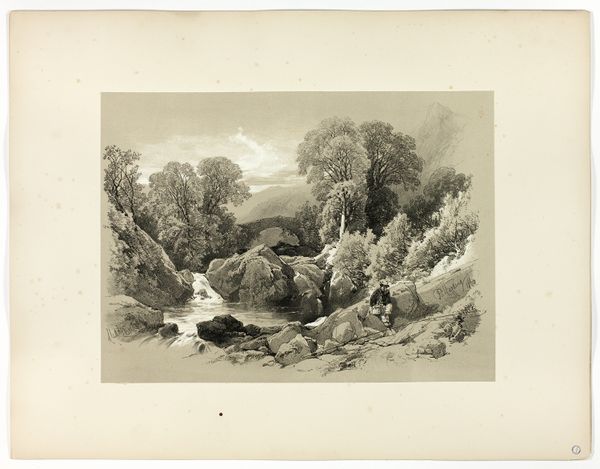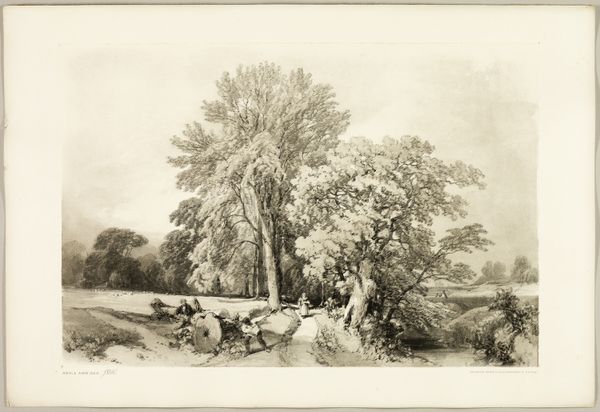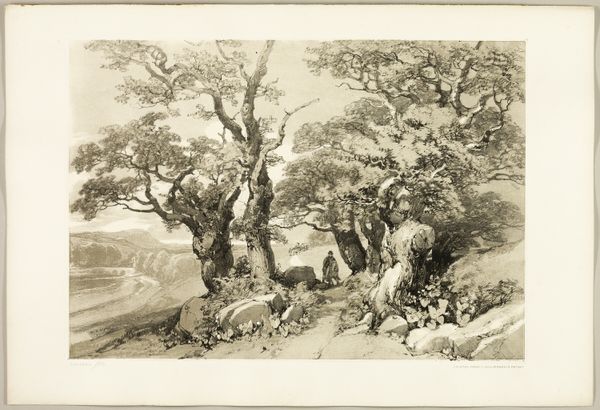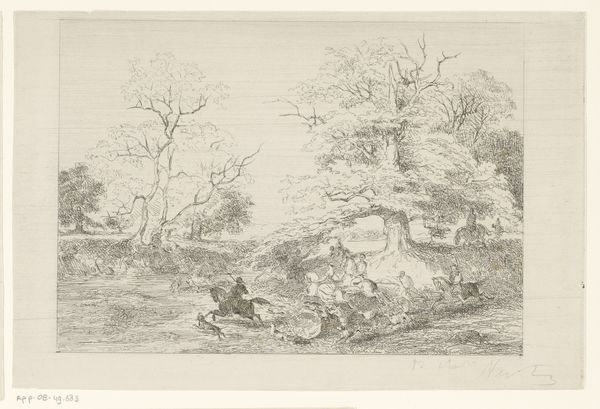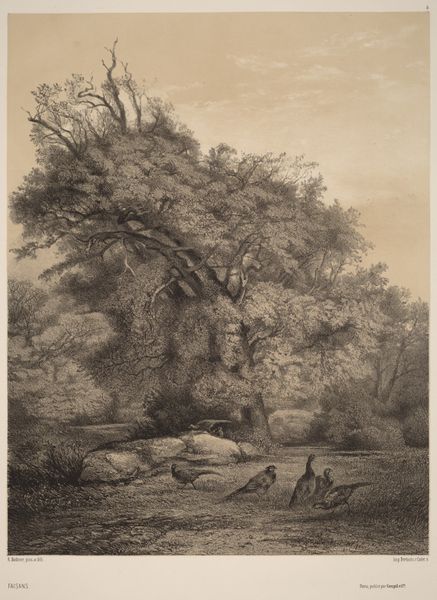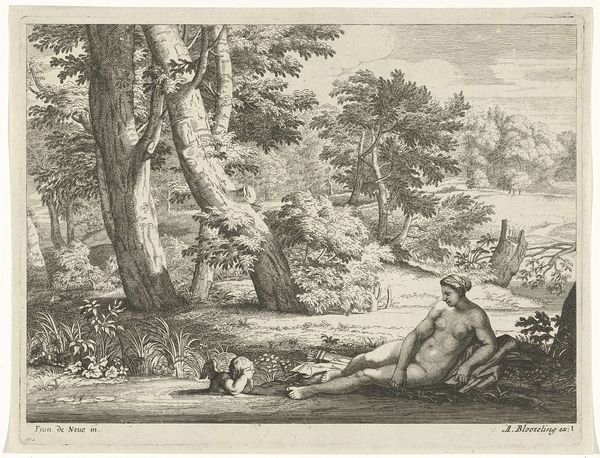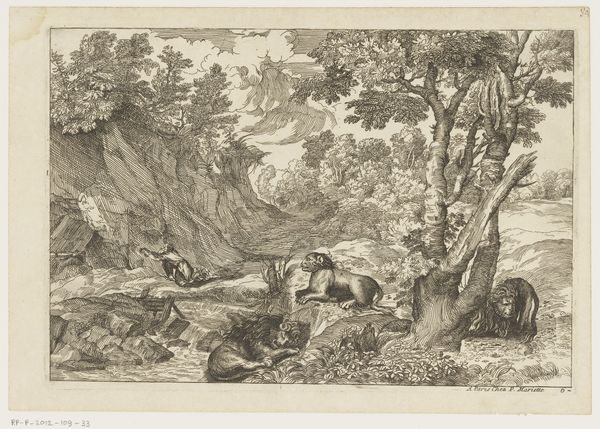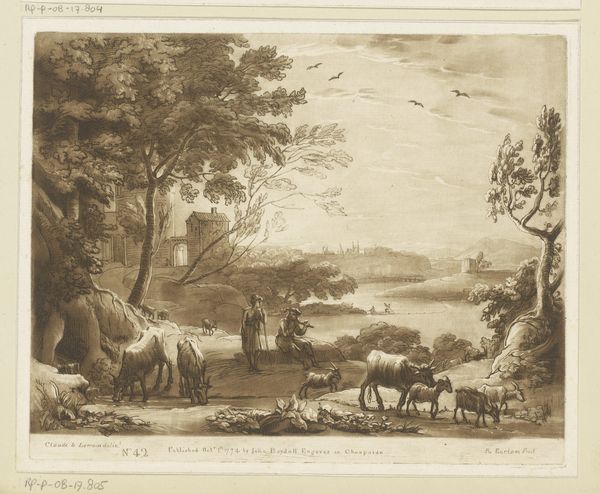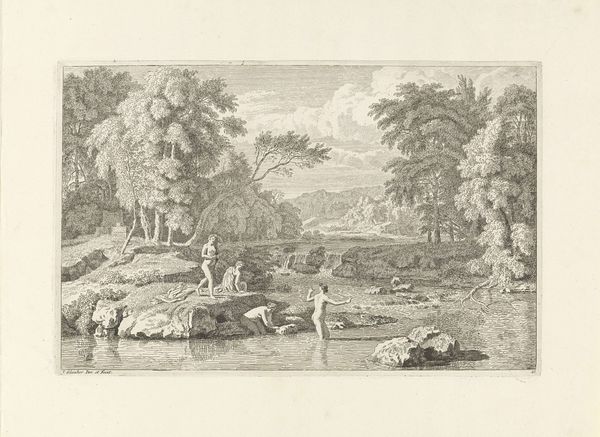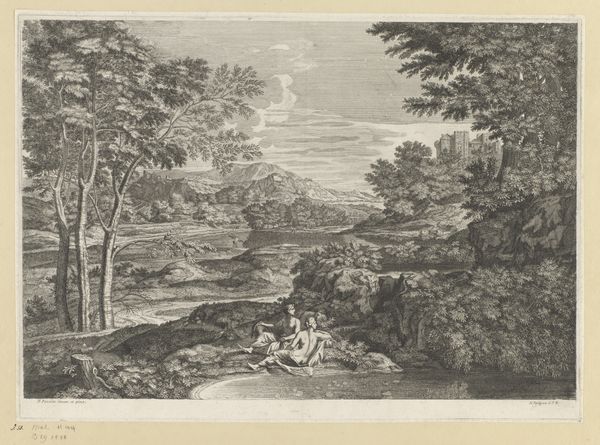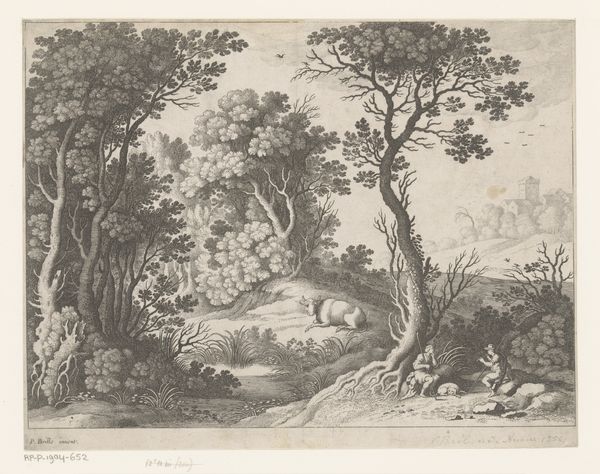
Ash and Alder on the Greta, from The Park and the Forest 1841
0:00
0:00
drawing, lithograph, print, paper
#
drawing
#
lithograph
# print
#
landscape
#
paper
#
pencil drawing
#
romanticism
#
realism
Dimensions: 285 × 408 mm (image); 369 × 541 mm (sheet)
Copyright: Public Domain
Editor: Here we have James Duffield Harding’s "Ash and Alder on the Greta, from The Park and the Forest," created in 1841 using lithograph, drawing, and print techniques on paper. The level of detail is impressive, especially in the foliage and water. It evokes a sense of peaceful solitude. What can you tell me about how this kind of scene fits into the art world of its time? Curator: That feeling of peaceful solitude you mention is key. Landscape art like this, particularly during the Romantic period, served an important function. It wasn't just about pretty scenery; it was about communicating ideas about nature's power, and often, about national identity. Where do you think the market for such images might have been at the time? Editor: Perhaps among the rising middle class? As a sign of good taste? Curator: Exactly! The Industrial Revolution was rapidly changing British society, and landscape prints became a way for the burgeoning middle class to connect with an idealized, pre-industrial past, and display that connection publicly. Images of the unspoiled countryside became badges of cultural capital. How do you see this playing out in "Ash and Alder"? Editor: I guess I didn’t consider how accessible prints would have made these scenes. The presence of a small figure by the river makes me think of the accessibility you describe; nature became less about a scary or overwhelming force, and more for the common person. Curator: Precisely. And note the title, "from The Park and the Forest" implies that the wilderness is tamed enough to become part of the everyday landscape. Editor: I had not considered the significance of the printmaking aspect so linked to access, making nature more mainstream for collectors and public consumption. It's a really insightful way of looking at it. Curator: Indeed, it showcases the complicated interplay between art, commerce, and cultural identity.
Comments
No comments
Be the first to comment and join the conversation on the ultimate creative platform.
